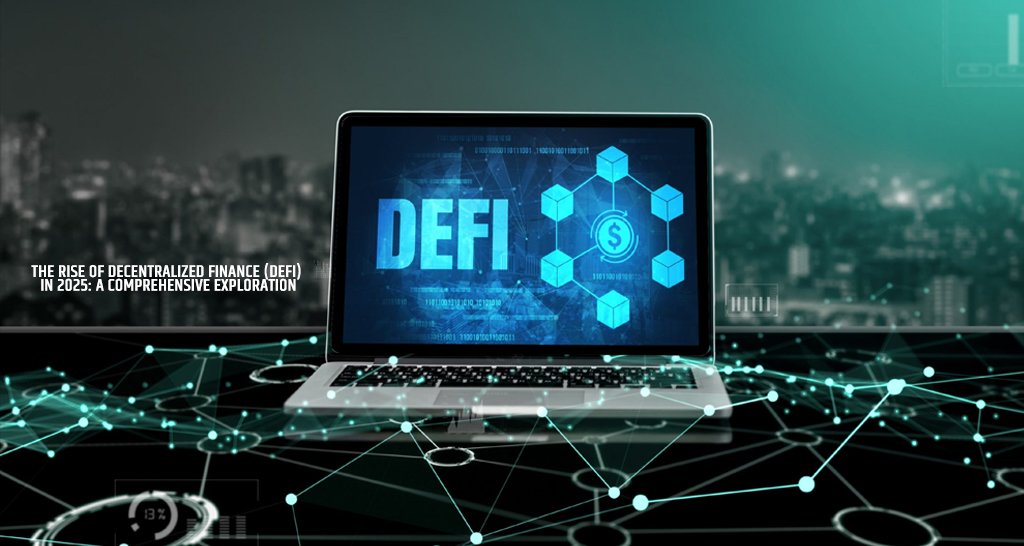Understanding Decentralized Finance: A Brief Overview
Decentralized Finance, commonly known as DeFi, represents a significant shift in the financial landscape, employing blockchain technology to disrupt traditional financial systems. Unlike conventional finance, which relies heavily on intermediaries such as banks and brokerage firms, DeFi operates on a peer-to-peer basis, thus eliminating these middlemen. This absence of intermediaries not only reduces transaction costs but also enhances accessibility for individuals who may have been excluded from traditional banking services.
At its core, DeFi utilizes smart contracts—self-executing contracts with the terms of the agreement directly written into code. These smart contracts reside on blockchain networks, ensuring both immutability and transparency, which are fundamental principles of DeFi. By leveraging these technologies, DeFi protocols can offer a range of financial products and services, from lending and borrowing to trading and investing, all executed without human intervention.
The transparency afforded by blockchain technology provides users with the ability to verify transactions and audit smart contracts. This fosters a higher degree of confidence in financial interactions, as participants can independently assess the integrity of the protocols in use. Additionally, DeFi promotes the idea of composability, allowing different financial services to seamlessly integrate. As developers create new applications, they can build on existing platforms, leading to innovative financial solutions that were previously unattainable in traditional finance.
Moreover, DeFi encourages democratization of finance by removing barriers to entry, making a myriad of financial services available to anyone with internet access. This accessibility can significantly empower individuals globally, allowing for greater financial inclusion and participation in global markets. As DeFi continues to evolve, it is poised to challenge established financial systems and reshape the future of financial services considerably.
Key Trends Driving DeFi Growth in 2025
As we progress through 2025, several key trends are significantly influencing the expansion of decentralized finance (DeFi). One of the most notable factors is the increasing adoption of cryptocurrencies among both retail and institutional investors. As more individuals recognize the potential benefits and use cases of digital assets, the demand for DeFi services has surged. Platforms offering decentralized lending, borrowing, and trading have become more accessible, attracting a diverse user base that seeks alternatives to traditional financial systems.
Furthermore, the evolution of regulatory frameworks around cryptocurrencies is playing a pivotal role in shaping the DeFi landscape. Regulatory clarity provides legitimacy and reassurance to potential users, thereby fostering trust in decentralized platforms. Governments and financial authorities are progressively recognizing the importance of blockchain technology and are working towards establishing guidelines that facilitate innovation while ensuring consumer protection. This regulatory environment encourages financial institutions to explore DeFi, further expanding its reach.
Technological advancements also contribute to the growth of DeFi in 2025. The implementation of more efficient consensus mechanisms and cross-chain interoperability is enhancing user experience and the functionality of various platforms. These developments allow for seamless integration between different DeFi protocols, enabling users to leverage a hybrid of services that meet their needs. Additionally, user education and awareness initiatives are crucial in demystifying DeFi for newcomers. Educational resources help to cultivate a better understanding of the risks and rewards associated with decentralized finance, fostering broader participation.
Stablecoins are emerging as a fundamental component of the DeFi ecosystem, providing stability to users in a volatile market. The use of stablecoins in yield farming strategies offers users opportunities to earn passive income while minimizing risks associated with fluctuating asset values. Moreover, the continuous emergence of decentralized applications (dApps) is catering to a variety of user needs, from lending and saving to trading, making DeFi increasingly relevant in today’s financial landscape.
Challenges and Risks Facing the DeFi Ecosystem
The decentralized finance (DeFi) ecosystem continues to gain traction in 2025; however, several challenges and risks loom over its future development. One of the primary concerns pertains to security vulnerabilities. As the DeFi landscape is primarily built on blockchain technology, it remains susceptible to hacks and breaches. Reports indicate that vulnerabilities within smart contracts can lead to significant financial losses for users, emphasizing the need for thorough security audits before deployment. These audits serve as a safeguard against common exploits that hackers might employ to take advantage of weaknesses in the code.
Smart contract risks are a crucial aspect of the DeFi space that warrant close attention. A smart contract, once deployed, operates autonomously and cannot be altered easily. This inherent immutability means that any bugs or flaws present in the contract can lead to irreversible consequences. Hence, developers must adopt best practices in programming and conduct rigorous testing to minimize these risks. The reliance on third-party protocols also introduces potential vulnerabilities, as flaws in external systems can impact the overall security of the DeFi platform.
Another significant risk is the potential for regulatory hurdles. As DeFi continues to grow, regulatory authorities are increasingly scrutinizing this emerging sector. The lack of clear regulatory frameworks can create uncertainty for users and developers alike, potentially stifling innovation and adoption. Establishing effective compliance measures is essential, yet the balance between regulation and the foundational ethos of decentralization must be carefully navigated.
Additionally, the volatility of cryptocurrencies impacts DeFi investment strategies significantly. Rapid price fluctuations can lead to both substantial gains and devastating losses, making risk management critical for users engaging in yield farming and liquidity provision. Investors must be prepared to navigate these turbulent waters, employing tools and strategies to mitigate risks effectively. Thus, understanding the complexities associated with the DeFi ecosystem is vital for anyone aiming to participate in this transformative financial landscape.
The Future of DeFi: Predictions and Opportunities
As we project beyond 2025, the landscape of decentralized finance (DeFi) promises to experience transformative growth, significantly impacting traditional financial systems. One potential direction for DeFi lies in its further integration with conventional finance, cultivating an ecosystem that leverages the strengths of both sectors. Centralized finance (CeFi) institutions may adapt and innovate by adopting DeFi principles, such as improved transparency, enhanced efficiency, and reduced transaction costs. This symbiotic relationship could lead to hybrid financial products that combine the best aspects of both systems, enabling a seamless user experience.
The advent of regulatory clarity could enhance this integration by addressing concerns around security and compliance. As regulators increasingly recognize the significance of DeFi, frameworks may emerge that facilitate collaboration between DeFi platforms and traditional financial institutions. This regulatory engagement may present opportunities for legitimacy and stability, fostering wider acceptance and mass adoption of decentralized financial solutions.
Moreover, innovation is poised to thrive within the DeFi sector, driven by collaboration between decentralized projects and institutional investors. Such partnerships could unlock new avenues for scalability, allowing DeFi protocols to handle increased user demand efficiently. By attracting capital and expertise from established financial entities, emerging DeFi projects can develop superior offerings, pushing the boundaries of financial services further than ever before.
In this evolving landscape, opportunities to enhance user experiences through financial inclusion, accessibility, and customized services will arise. The potential for automation via smart contracts can lead to more sophisticated financial products that address unique consumer needs. Thus, the future of DeFi stands not only as a reaction against traditional finance but also as a domain ripe for innovative solutions that could redefine how we perceive and engage with financial services globally.



